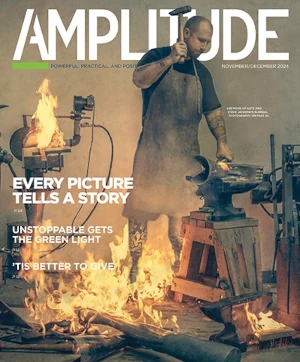Francois Van Der Watt treats every client like a champ, whether or not they’re an athlete.
By Emily Dings
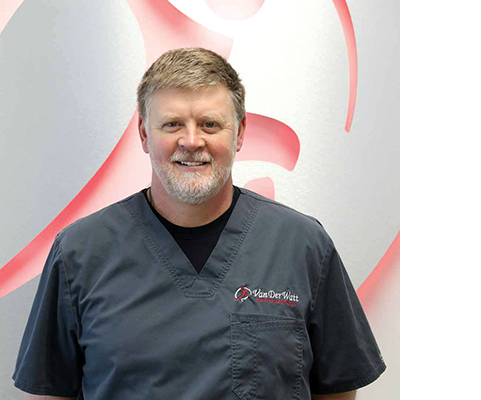
By the time he was two years old, Cooper Blair had endured seven surgeries on his lower limbs to counter the effects of amniotic band syndrome. But despite his doctors’ best efforts, the child faced a future of limited mobility. That made his parents’ decision to amputate both legs an obvious one, and it became clear they had made the right choice a few months later, when Blair was fitted with his first prosthetic limbs. The toddler began walking with ease, and before long he started running. And running.
He ran so much and got so good at it that, at age nine, Blair took first place in his division at the Endeavor Games. His parents saw his potential and wanted to nurture it, but the family’s regular prosthetist didn’t have much experience working with athletic youngsters.
“We were living outside Pittsburgh, and there were not a lot of prosthetists around locally,” recalls Blair’s mother, Richelle. “We were dealing with an active child, and it was kind of frustrating at first. When we met Francois, we knew he was the one for our family. He looked at the whole child and went the extra mile to see what was best for him.”
By “Francois,” she means Francois Van Der Watt, the world-renowned prosthetist who has been helping amputee sprinters achieve maximum speed since the Flex-Foot Cheetah was a mere kitten. One of his early clients, Oscar Pistorius, later became the most famous Blade Runner of them all. As the official prosthetist for the US Paralympic Track and Field team since 2008, Van Der Watt has helped a host of elite athletes achieve Paralympic glory. Just as important, he has empowered hundreds of everyday amputees to reach their own goals in life.
“He loves what he does, and you can tell,” says Blair, who’s now 17 and hopes to join the prosthetist’s roster of Paralympic performers. The motto of Van Der Watt’s clinic reads, “Turning Disabilities into Possibilities”—and he applies it with the same passion whether you’re chasing your personal best in the athletic arena or in some other realm.
Getting to the Games
Growing up on his family’s farm in South Africa, Van Der Watt always assumed he would eventually become a farmer. But a chance meeting in college took him down a much different path. He was introduced to prosthetics by his college roommate, whose brother worked in the profession. After spending some time volunteering at a prosthetic clinic, Van Der Watt knew he had found his calling. He went on to earn a diploma in prosthetics and orthotics from the Technikon Pretoria (now part of Tshwane University of Technology) in 1996 and began working with athletes almost immediately. He attended his first Paralympics in 2000, traveling to Sydney to support a client who was competing for the South African team.
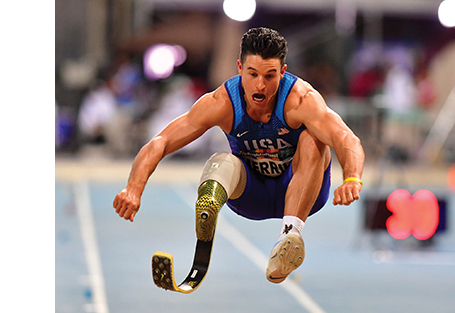
The Sydney Games were the first to feature widespread use of the Flex-Foot Cheetah, which was introduced in 1996 as the first modern running blade. Van Der Watt began tinkering with the technology, and Pistorius (then a teenage running phenom) became one of his first protégés in the early 2000s.
“At the time there was very little knowledge about the specifics of high-performance sport prosthetics,” Van Der Watt recalls. “You just threw everything against the wall to see what worked. It drove me to be always learning and becoming more efficient and effective.”
Despite Pistorius’ obvious potential, Van Der Watt didn’t feel South Africa could offer the opportunities he sought to push the limits of the Cheetah and other groundbreaking prosthetic technology. In 2002 he turned his sights to the United States, working in clinics from Georgia to Texas while pursuing a degree in sports and health sciences. Van Der Watt formed an affiliation with global prosthetics giant Össur, which had acquired the rights to the Flex-Foot Cheetah in 2000, and in 2008 he returned to the Paralympics, this time as a prosthetist for Team USA’s track athletes.
En route to the Games in Beijing that year, the US Paralympic team stopped over in Japan for a training camp. Van Der Watt was struck by the deep respect, even reverence, that was shown toward the athletes, whose disabilities included limb differences, spinal injuries, vision loss, muscular conditions, and neurological impairment. It was also during this trip that he began working with Jerome Singleton, who soon emerged as Pistorius’ chief rival in the 100 meters.
Singleton became one of the first in a series of American medal winners to work with Van Der Watt. In fact, combining his service to both the US and South African teams, Van Der Watt has worked with a medalist in five consecutive Paralympics, dating back to the start of this century. A prime candidate to extend the streak to six straight Games is sprinter and long jumper Trenten Merrill. He met Van Der Watt years ago at a running clinic and asked to work with him after the two men crossed paths several more times at various track meets.
“He blessed me for sure,” says Merrill, recounting how Van Der Watt helped expertly fit him for an updated sprint blade and socket. “Every time I worked with him in person, it was a good time. You get to bounce ideas around, very much like scientists in a lab. It’s a cool relationship.”
Their experiments together have produced impressive results: After Van Der Watt outfitted him with a blade specifically designed for the long jump, Merrill set a new US record in the event. He credits his easy rapport with Van Der Watt as a key to his success, adding that everyone getting fitted for a prosthesis should communicate as openly as possible, whether or not they are high-level athletes. “Describe exactly what you feel,” he says.
Merrill lost his right leg below the knee at age 14 following a dirt bike accident. When he later began to pursue track and field as an amputee, the coach at his university ignored Merrill’s repeated requests to join the team. He kept training on his own, changed colleges, and made a point of surrounding himself with people who believed in him. With the support of a prosthetist like Van Der Watt, he says. “there’s not much I can’t do.”
Cooper Blair, who hopes to join Merrill on Team USA, also has a productive relationship with Van Der Watt, and he thinks it contributes directly to his performance on the track. Blair enjoys watching his prostheses being made and even helping in the process, an experience not offered by many prosthetists. And when he gives an opinion about his goals, his socket fit, or anything else, Blair trusts that his voice will be heard.
“Don’t be shy,” he says. “Find a prosthetist that works for you.”
Running Your Own Race
Since 2015 Van Der Watt has operated his own clinic, Van Der Watt Prosthetics & Orthotics, in Greenwood, Arkansas, in the northwestern part of the state. A collection of sports memorabilia decorates the wall, bearing witness to Van Der Watt’s work with top athletes. But top athletes only make up a tiny fraction of the people who come through the door. The remainder run the gamut: Some are pretty serious about staying fit, others enjoy sports recreationally, and still others don’t have the time or interest to pursue athletics at all.
“Everyone has a different story,” says Merrill, who enjoys the clinic’s diverse population of patrons. “You always meet someone new.”
“His approach is unreproachable,” says Dennis Goodwin, an equipment operator who lost his foot in a boating accident in 1991. In the years that followed, he used a series of prosthetic limbs that never fit exactly right, making the best of the situation but never thriving. He happened upon an advertisement for Van Der Watt’s clinic when he moved to western Arkansas in 2016, and it was only then that he became fully aware of the level of discomfort he’d been living with for nearly 25 years.
When Goodwin arrived for his first appointment, his residual limb was covered in sores. “I wasn’t doing real well,” he says, describing his prior prosthetists’ approach as “trying to put a stump into a round can.” He had come to accept discomfort and irritation as inevitable side effects of prosthesis use, because that’s all he had ever known. Van Der Watt changed his outlook almost immediately. “He really turned things around,” Goodwin says. “He’s the best I’ve ever seen.”
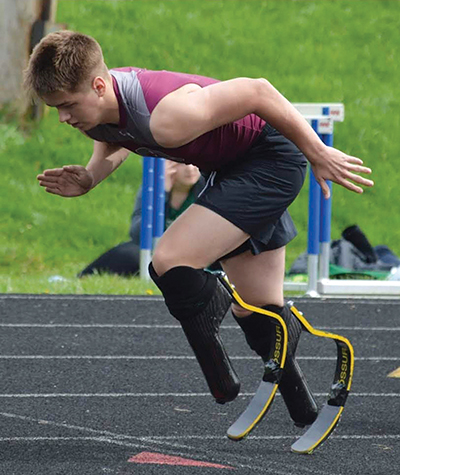
Goodwin thinks Van Der Watt’s experience with athletes helps him work with clients of all ability levels, and Van Der Watt doesn’t disagree. Because athletes are in tune with their bodies to a much higher degree than the average person, they tend to give detailed descriptions of how a socket feels and what adjustments they need in terms of fit and functionality. “They give invaluable feedback,” Van Der Watt says, and those insights can then be applied to other clients.
In addition, working with athletes has enabled Van Der Watt to study biomechanics in high definition, an experience that benefits everyone he works with. “It’s made me more observant of how the body moves,” he explains. That knowledge, in turn, helps Van Der Watt with his most complex and demanding cases—and those aren’t necessarily the Paralympians.
“It is sometimes as challenging to work with a K2 amputee as with a sprinter,” he notes, because many K2 amputees have to make difficult adjustments to navigate their everyday lives. Simply being able to stand without pain or walk to the mailbox can require patience and effort from both the prosthetist and the client. In time, many of these individuals are able to ease back into recreational activities they loved prior to limb loss, or even to try completely new things.
The key, Van Der Watt says, is to find a prosthetist you can partner with. That begins with holding an honest conversation about your aspirations for your quality of life, he adds. By clearly expressing what activities are your top priorities, you can help your prosthetist identify the mobility system that best fits your needs.
Above all, says Van Der Watt, the best way to maximize your potential as an amputee is to advocate for yourself. Whether the finish line you’re chasing lies on the racing track, in the workplace, at home, or between your ears, go after it hard—and find a prosthetist who can help you get there. Every amputee deserves that kind of commitment, Van Der Watt believes, whether the person is a Paralympian or a nonathlete.
That’s what the philosophy of “Turning Disabilities into Possibilities” boils down to. Paralympic medal contender Trenten Merrill puts it another way: “Don’t be afraid to try.”
Francois Van Der Watt’s US All-Stars
As the team prosthetist for US Para Track and Field since 2008, Van Der Watt has worked with some of the best amputee runners and jumpers in US history. At his Arkansas clinic, he has worked with clients who’ve won Paralympic medals, World Championship titles, and All-America honors. Here’s a short list of the athletes Van Der Watt has helped propel to the podium.
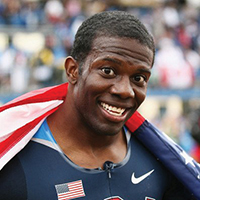
Jerome Singleton
A year before the 2012 Paralympics, Singleton became the first runner in seven years to beat Oscar Pistorius in the 100-meter sprint. The feat made global headlines and positioned Singleton as the man to beat heading into the London Games. It also avenged his narrow loss to Pistorius at the 2008 Paralympics in Beijing. He once told an interviewer: “Muhammad Ali had Joe Frazier. Magic Johnson had Larry Bird. Oscar Pistorius has…you’re looking at him.”
Medal haul: Two Paralympic (one gold, one silver), six World Championship (two gold, two silver, two bronze).
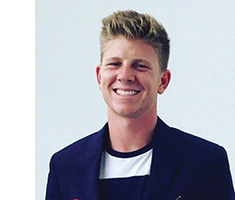
Hunter Woodhall
When Woodhall came to the University of Arkansas in 2017 as the first double amputee ever to earn an NCAA scholarship, the only person he knew in the state was Van Der Watt. They’d met in 2014 at a parasports training camp, Woodhall says, where “he went through my alignment and made a few changes. The difference was astronomical.” Two years later, Woodhall medaled in both the 200 and 400 meters at Rio. At Arkansas, where he competed against able-bodied runners, he earned All-America honors three consecutive years.
Medal haul: Two Paralympic (one silver, one bronze), four World Championship (three silver, one bronze).

Jason Macom
Macom was a promising bicycle racer before losing his right leg six years ago at age 25. An Arkansas native, he quickly found his way to Van Der Watt’s shop, resumed competitive racing within a year, and reached the World Championships a year after that. Macom is an information technology specialist and computer modeling whiz, and Van Der Watt drew on his expertise last year to experiment with 3D-printed prosthetic components.
Medal haul: Two World Championship (two silver).
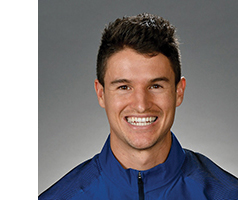
Trenten Merrill
Merrill had never even heard of the Paralympics when his first prosthetist urged him to start running competitively. He got serious about the sport after attending a clinic led by Oscar Pistorius, but it would be nearly another decade before he teamed up with Van Der Watt. The US record holder in the long jump for his classification, he finished just off the podium at the 2016 Rio Games.
Medal haul: One World Championship (silver).


